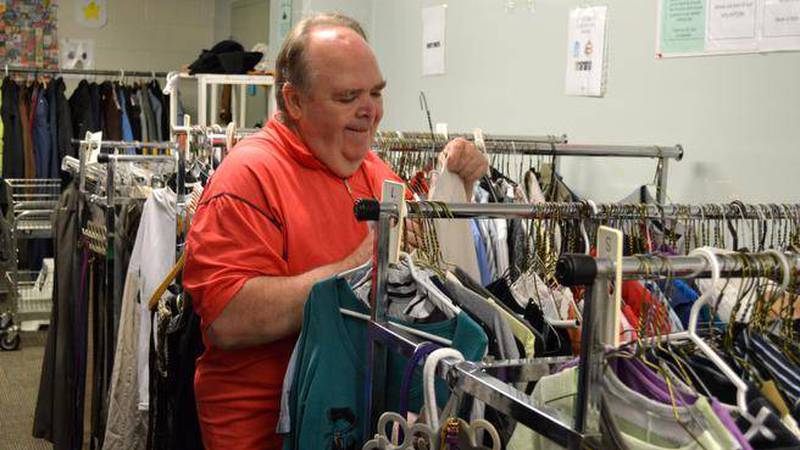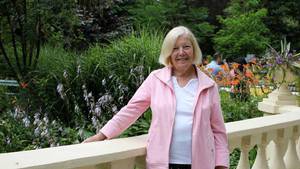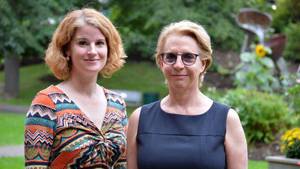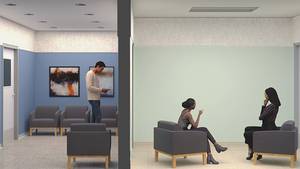It’s a small space that has a huge impact on the lives of patients, staff, and the community. Clothes City is a free clothing service tucked onto the ground floor of the QEII’s Abbie J. Lane building.
The shelves in the small room are overflowing with clothing donated from many sources. The main caveat to donating gently-used, adult clothing is that it be clean and odour-free, as Clothes City does not have the facilities to clean clothes after they have been donated.
Clothes City is staffed by volunteers and is a learning experience for many of them.
“I’ve been a volunteer here for the past three years and I’ve learned a lot about clothes,” Paul Cranidge says. “I like the people and I like the work.”
QEII occupational therapist and volunteer supervisor Julie Delnegro says people who come to Clothes City range from QEII patients, members of the mental health community, and others in need. Regular customers are patients on the sixth and seventh floor of the Abbie J. Lane who need clothing and shoes. The service also caters to those who’ve come into the health centre with nothing but the shirt on their back and need to have more than a hospital gown to wear.
The clothing comes from many sources. Julie says in a real community effort, one church solicits clothing twice a year, and brings volunteers into Clothes City to help sort the items.
“We received three full vans — 80 bags worth — from a yard sale held recently at a local synagogue,” she said. “Those clothes were gone within a matter of weeks.”
Clothing needs change with the season, and with winter coming, warm coats and jackets, hats, mittens, gloves, scarves, socks, boots and tights are essential for Clothes City to provide to their clients.
“Clothes City started as a therapeutic opportunity to enable mental health clients to keep busy by volunteering in a work environment with regular shifts and duties, and to feel like part of the community,” says Julie. “Today, the program is now a service to the community.”
For Paul, the shifts he and other volunteers spend at Clothes City are rewarding. He retired early, and the two-hour shifts are perfect for his lifestyle. One of the things he likes is that the shift is generally a blend of assisting people find clothing and quiet time where he can sort the clothes and do other activities in solitude.
“Sometimes people will come in and ask you to keep your eye open for a specific item,” he says. “Or, they’ll ask you to put something away until they come back.”
Both Paul and Julie have wish lists of items that are always in need: plus-sized clothing for men and women, jeans, jackets, sneakers, new underwear, and backpacks. While Clothes City is almost completely dependent on donations of clothing and operates on a shoestring budget, they sometimes need to purchase items like socks and underwear.
Donations of clean, odour-free clothing may be dropped off at the small donation box at the front door or ninth floor of the QEII’s Abbie J. Lane building.








